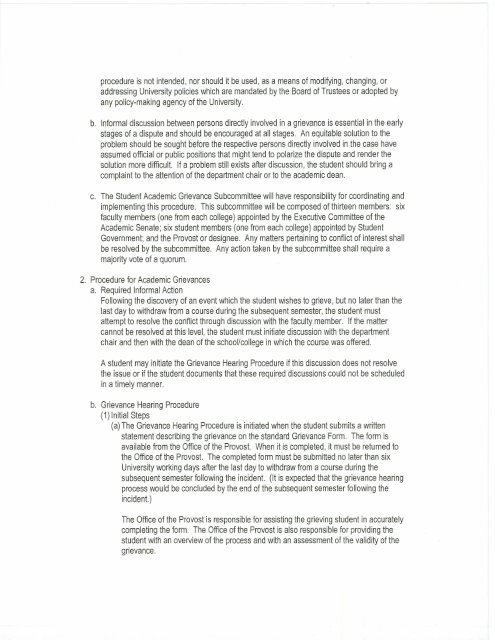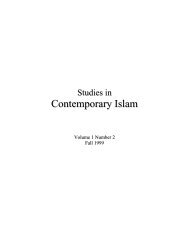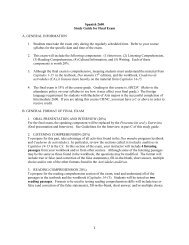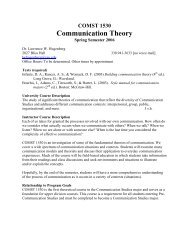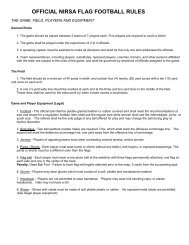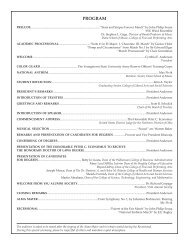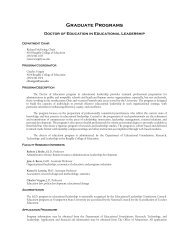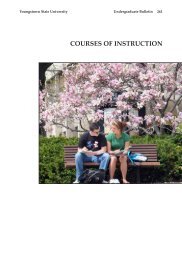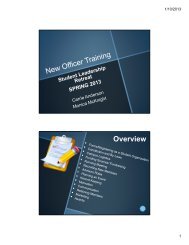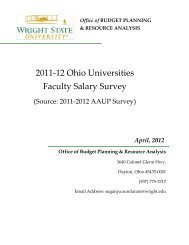September 29, 2006 - YSU - Youngstown State University
September 29, 2006 - YSU - Youngstown State University
September 29, 2006 - YSU - Youngstown State University
Create successful ePaper yourself
Turn your PDF publications into a flip-book with our unique Google optimized e-Paper software.
procedure is not intended, nor should it be used, as a means of modifying, changing, or<br />
addressing <strong>University</strong> policies which are mandated by the Board of Trustees or adopted by<br />
any policy-making agency of the <strong>University</strong>.<br />
b. Informal discussion between persons directly involved in a grievance is essential in the early<br />
stages of a dispute and should be encouraged at all stages. An equitable solution to the<br />
problem should be sought before the respective persons directly involved in the case have<br />
assumed official or public positions that might tend to polarize the dispute and render the<br />
solution more difficult. If a problem still exists after discussion, the student should bring a<br />
complaint to the attention of the department chair or to the academic dean.<br />
c. The Student Academic Grievance Subcommittee will have responsibility for coordinating and<br />
implementing this procedure. This subcommittee will be composed of thirteen members: six<br />
faculty members (one from each college) appointed by the Executive Committee of the<br />
Academic Senate; six student members (one from each college) appointed by Student<br />
Government; and the Provost or designee. Any matters pertaining to conflict of interest shall<br />
be resolved by the subcommittee. Any action taken by the subcommittee shall require a<br />
majority vote of a quorum.<br />
2. Procedure for Academic Grievances<br />
a. Required Informal Action<br />
Following the discovery of an event which the student wishes to grieve, but no later than the<br />
last day to withdraw from a course during the subsequent semester, the student must<br />
attempt to resolve the conflict through discussion with the faculty member. If the matter<br />
cannot be resolved at this level, the student must initiate discussion with the department<br />
chair and then with the dean of the school/college in which the course was offered.<br />
A student may initiate the Grievance Hearing Procedure if this discussion does not resolve<br />
the issue or if the student documents that these required discussions could not be scheduled<br />
in a timely manner.<br />
b. Grievance Hearing Procedure<br />
(1) Initial Steps<br />
(a) The Grievance Hearing Procedure is initiated when the student submits a written<br />
statement describing the grievance on the standard Grievance Form. The form is<br />
available from the Office of the Provost. When it is completed, it must be returned to<br />
the Office of the Provost. The completed form must be submitted no later than six<br />
<strong>University</strong> working days after the last day to withdraw from a course during the<br />
subsequent semester following the incident. (It is expected that the grievance hearing<br />
process would be concluded by the end of the subsequent semester following the<br />
incident.)<br />
The Office of the Provost is responsible for assisting the grieving student in accurately<br />
completing the form. The Office of the Provost is also responsible for providing the<br />
student with an overview of the process and with an assessment of the validity of the<br />
grievance.


